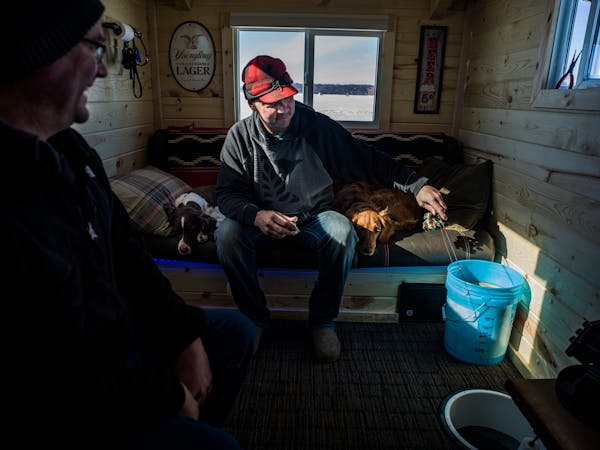About 1.8 million people spent a night in Minnesota's vast system of parks and recreation areas in 2023. The number is nearly the same as in 2022, suggesting the state is perhaps at odds with the rabid U.S. camping interest so often communicated.
Yet, a comparison with 2019 — before the pandemic drove newcomers and others in record numbers to outdoor spaces — is a truer reflection of the interest in Minnesota parks, according to a state parks system analyst.
More people are camping at state parks on average, and they are staying longer, too, said Jared Walhowe, integrated program coordinator in the Parks and Trails Division of the Department of Natural Resources. The number of overnight visitors, aka campers, is up more than 13% from 2019 levels.
This year's data also supports that park visitors' habits, on average, are changing. Here is a snapshot of some of the data and what it means:
More overnight visits and nights reserved
The longer view better represents a trend because of a pandemic-induced spike, Walhowe said. The overall increase in camping and the number of nights reserved culled from a 2023 vs. 2019 comparison might be the new plateau for the system. Lengths of stays have risen, too. "I would consider the data for [2020 and 2021] outliers," he said.
"We had this huge jump [during the pandemic], but some people have gone back to doing other things, too," he said. "Maybe they came to a park for the first time during COVID. Maybe they didn't stick around."
Walhowe said a glitch in the online reservation system that allows some people to scoop up more days than they should likely isn't a significant factor in the noticeable uptick in nights reserved. Campers currently go online to see what sites are available 120 days out. What some visitors do is book 120 days out, plus 14 days more.
"We are seeing an increase in reservations of all lengths compared to 2019," he said. "Thirteen- to 14-day reservations make up approximately only 1% of reservations."
Walhowe said the division has focused more on the "no-show" policy, highlighting when it occurs and opening up the remaining days.
Increased annual permit and license plates sales
More people are visiting and it appears more often, Walhowe said. The DNR now sells more annual passes than daily permits compared to 2019.
Visitors bought 296,000 year passes this year through mid-December, an increase of 61% from 2019. Tying in specialty license plate sales, and the increase bumps to 68%. Walhowe said annual permit sticker-holders could be transitioning to license plates, whose sales benefit parks and trails and which service as an annual pass.
Meanwhile, daily permits during the same time frame dropped 14%. This year, 248,000 were sold. Walhowe believes those who visited once or twice yearly have jumped to annual passes.
More people are buying online, too, contributing to retention, he added. Buyers get an electronic reminder to re-up.
"You're just more likely to stay in the system," he said. "Whereas, in the past, you might have been someone who only bought it when you went, and you didn't buy it until you went."
Most-camped park and recreation areas
Itasca, the oldest state park, also saw the most overnighters in 2022 (151,689).
Already a destination, Whitewater's newest campground, Minnieska, and its camper cabins have added to the park's popularity. Jay Cooke in Carlton, Minn., a sort-of gateway to Duluth and the popular parks up the North Shore, is consistently busy. From drive-in sites to walk-in areas to cabins, the park has a lot of availability.
Biggest percentage increase in campers since 2019
Split Rock Lighthouse opened a new campground, Shipwreck Creek, with 46 sites with electricity in 2022. Franz Jevne, along the Rainy River, only has 21 campsites (three walk-in), and was added to the reservation system this year. Until then, it was first-come, first-served. Vermilion-Soudan added camper cabins in 2020.
Walhowe encouraged the public to think beyond the challenges of, say, securing reservations at the busiest parks. New destinations are a form of adventure, too.
"There is no shortage of openings across the state and there is no shortage of other beautiful places to explore," he said. "Anything that we can do to draw people to some of those other places ... maybe it is not what they had in mind, but maybe they can create a new favorite place."

Could the Vikings trade down in the first round of the draft? Here's what their GM had to say.

Gophers QB Pyron, a transfer from Georgia Tech, is re-entering the portal

RandBall: My long history of investing in bad baseball teams

